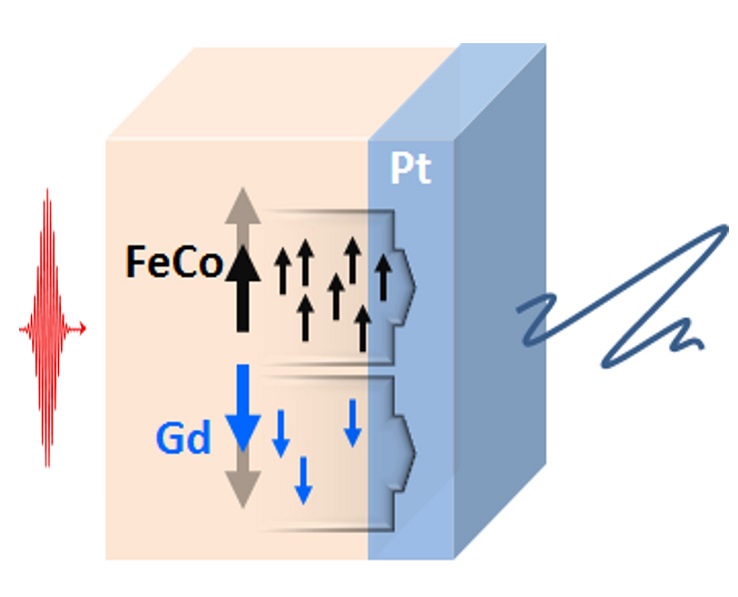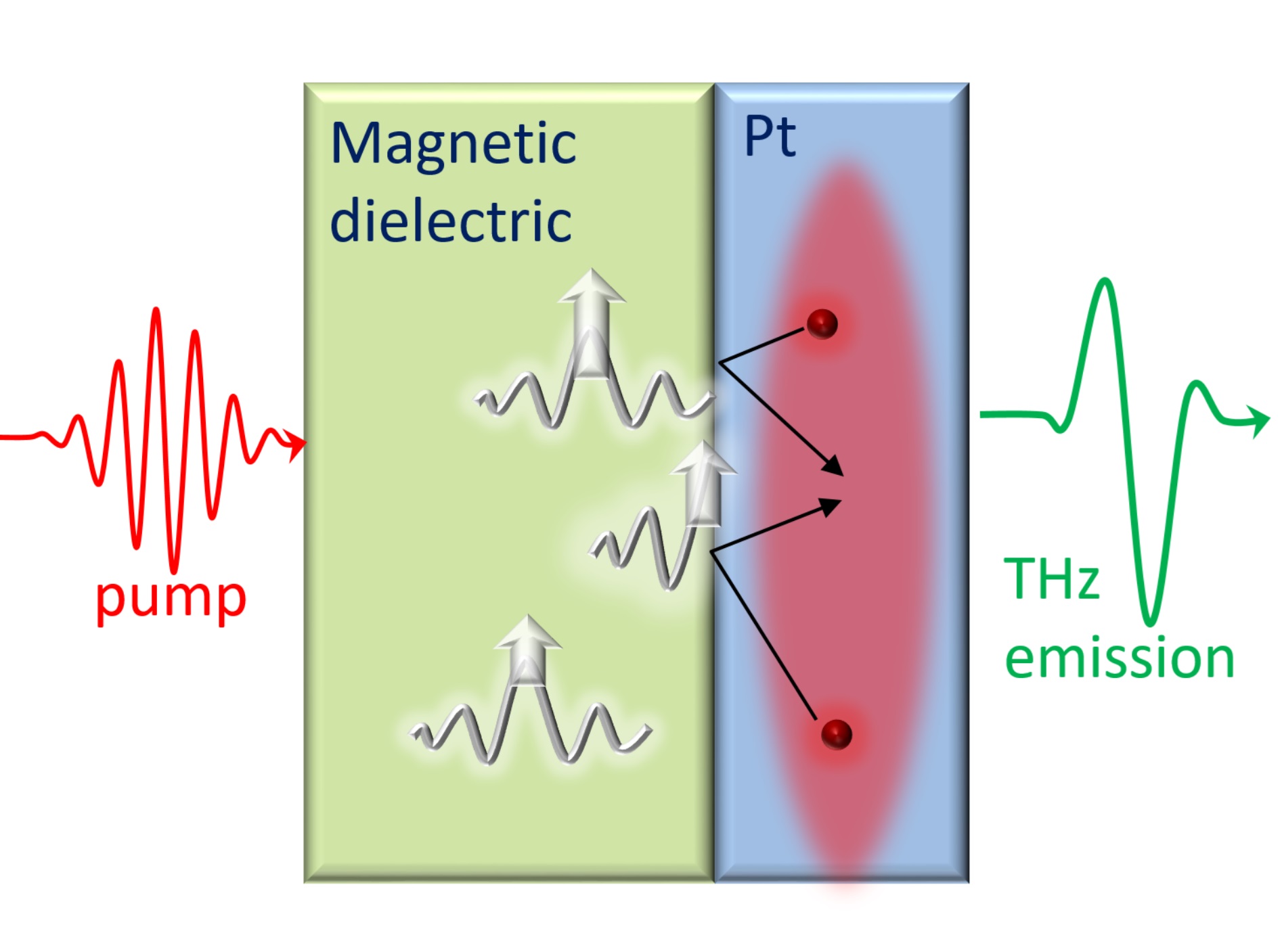Traditionally, the study of spintronics (spin-electronics) is approached with techniques that cover a bandwidth up to the gigahertz frequencies, because these are the natural frequencies with which ferromagnets precess. We are now interested in studying spintronic effects at picosecond timescales, in highly non-equilibrium conditions, with the idea to design ultra-fast non-volatile memory devices. For these studies we can rely on sub-picosecond time resolution allowed by pump-probe optical-THz methods. Our time-resolved THz spectroscopy lab is situated at the Maxwell Centre. The movie below, produced by Bullaki describes the different components of the set-up and a measurement example.
THz Time-Domain Spectroscopy |
|
|
One of the questions that we ask ourselves is how quickly we can extract spin from a magnet. The extracted spin carries information on the magnetic state of the magnet and can be read electrically by spin-to-charge transducers such as heavy metal thin films. When a magnetic metal is hit by a femtosecond optical pulse its magnetisation quenches and spin angular momentum is carried away by high energy charges. We found that in an alloy made by different magnetic species a net spin flow results even when the net magnetisation is zero. |
|
|
But how about magnetic dielectrics where charge motion is suppressed? In this case we can rely on the ultra-fast version of the spin-Seebeck effect. A temperature gradient between two different materials induces charge flow (Seebeck effect) and spin flow (spin-Seebeck effect) if at least one is magnetic. The problem is that temperature is slow and it takes too long to create a temperature gradient. In the ultra-fast version that we study, a femtosecond optical pulse is absorbed by the platinum thin film in contact with the magnetic dielectric and heats up the free electrons in 100 femtoseconds while the magnet is still cool. The temperature imbalance between the hot electrons in platinum and the spins in the magnetic dielectric triggers energy exchange via fast scattering processes. This results in the excitation of magnons that pump spin back into the platinum, where it is converted into a fast electrical pulse via the inverse spin Hall effect. |
|


